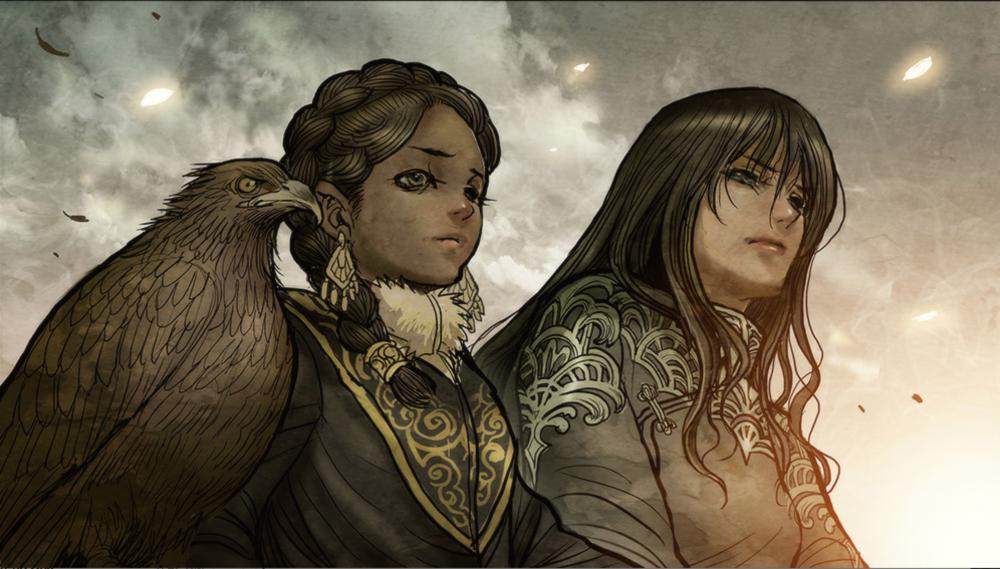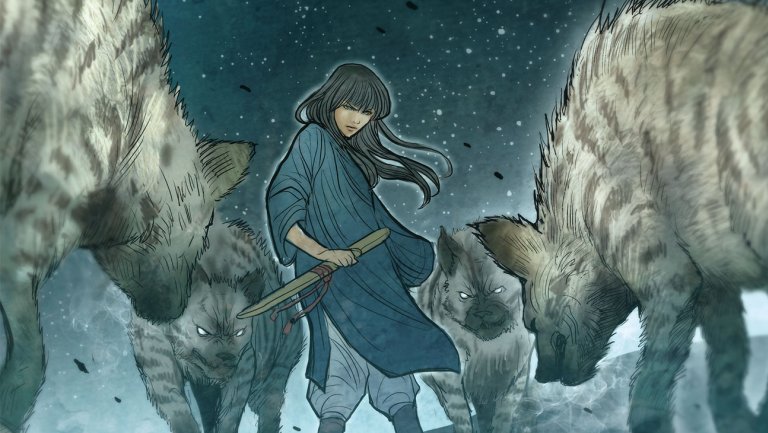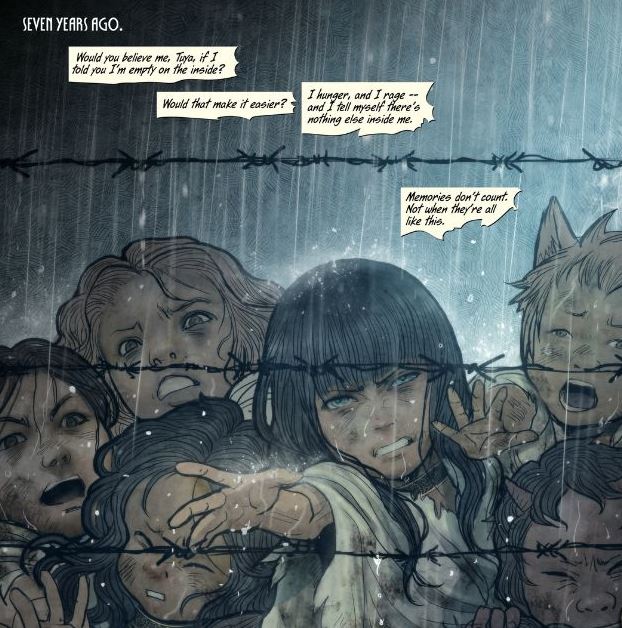Monstress
While I’ve never done much writing myself, the techniques that go into the craft have always fascinated me. In the realm of speculative fiction, two things can make or break a story: worldbuilding and pacing. While there are plenty of other important elements, these are the two that I most notice in speculative fiction because so much more has to be done to suspend disbelief when you’re talking about worlds with monsters and flying airships and magic. Monstress, written by Marjorie Liu and illustrated by Sana Takeda is an excellent example of both elements done well. Monstress is an ongoing steampunk/fantasy series that was originally published by Image Comics at the end of 2015 and the first six issues have since been collected into a single volume.
Monstress is set in what seems to be an alternate Asia that is a mash-up of fantasy and steampunk. While the world itself is never named, much of the story takes place in a land which has been torn apart during a war between human sorceresses known as the Cumaea and the Arcanics, a race of half-breed magical creatures. The Arcanic and Cumaea sides are in an uneasy truce due to a massacre at a place called Constantine, an event that neither side could claim as a victory. The main character is a young Arcanic woman named Maiko Halfwolf who is wrestling with a dark power she neither understands or can control as she pursues the truth about the betrayal that cost her mother her life. Maiko must navigate both Cumaea and Arcanic domains in order to find out what happened to her mother before her new dark power consumes her.
What intrigued me most about Monstress was the world building and the characterization. There are a number of matriarchal groups in the story and many of the characters are women. It’s not entirely a female cast but it was intriguing to see the focus on women in a fantasy setting. The Cumaea are often structured as villainous but as sorceresses who use experiments on Arcanic people to fuel their magic, they have an intriguing mix of science and magic. What seems to be a straight forward story of racism against the non-humans slowly turns into a multi-faceted discussion of “the other”, dehumanization and relationships. I particularly loved that the characters in the series are not flat heroes or villains but multi-faceted creatures with their own desires and motivations that drive them. Too often in fantasy, the role drives the character instead of making them feel like their own separate entity. Maiko is particularly interesting as someone who has survived a rather brutal life and is deeply scarred by it and trying to find her way even as she struggles to understand what’s going on.
I will however offer a warning: this story can often be confusing. MarjorieLiu starts the story in media res which means that at no point is there some introductory page where the setting or history of the world is described. Liu reveals pieces as the story progresses but if you pick this story up, be prepared to not immediately understand everything. The story itself isn’t ambiguous but it doesn’t hold your hand either.
As much as I enjoyed the story, Sana Takeda deserves a lot of credit for the greatness of Monstress. The art of the story is a gorgeous mix of manga and Western styles with an almost ethereal feel to it. The Arcanic creatures are very well drawn, such that they feel like living, breathing creatures and not just humans with some fox ears or wings thrown on. The story is compelling and fantastical on its own but Takeda’s art makes it absolutely enthralling.
Monstress is one of those fantasy stories that uses fantasy to explore some very dark elements of human nature. It’s a tale of magic, fear, horror and violence told in such a way that you cannot help but marvel at the beauty of it. It’s not necessarily an easy read and can be confusing, particularly if you don’t like being tossed in the middle of the story and having to figure it out as you go. But if you have the patience to work it out, Monstress is well worth picking up. As dark, epic fantasy series go, it’s hard to find much better.
– Cait




